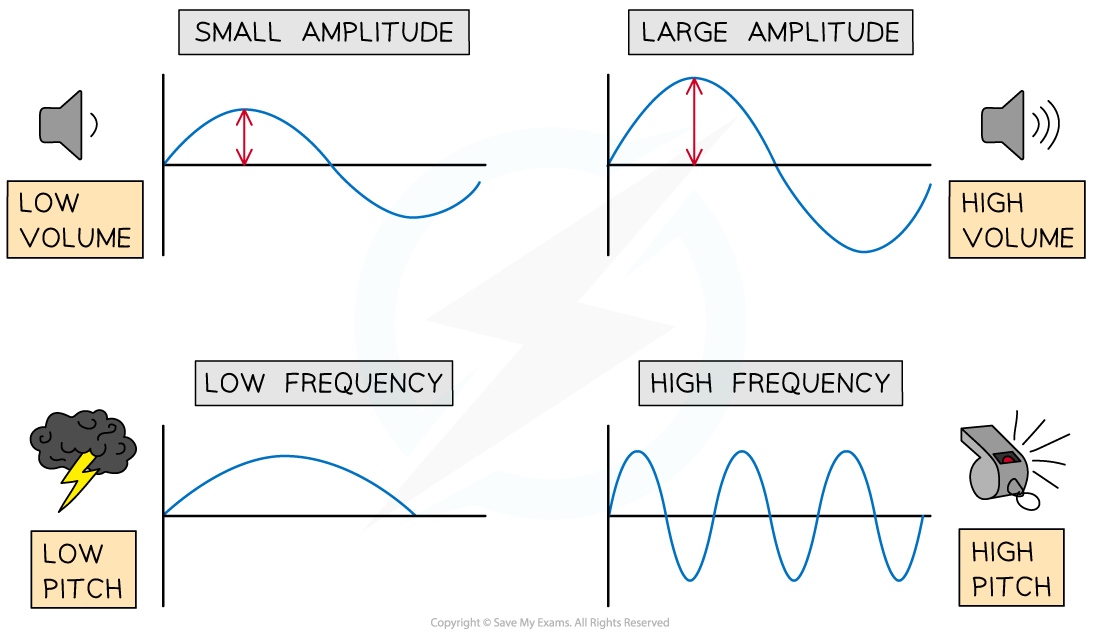Sound Waves (Oxford AQA IGCSE Physics)
Revision Note

Author
Leander OatesExpertise
Physics
Sound Waves
Sound waves are longitudinal waves
A vibrating source causes vibrations in a medium (such as air) which are detected as sound
Sound waves require a medium to travel through
This means that if there are no molecules, such as in a vacuum, then the sound can’t travel through it
Humans can detect vibrations with frequencies between 20 Hz and 20 000 Hz
This is the range of human hearing
Longitudinal waves consist of compressions and rarefactions:
A compression is a region of higher density i.e. a place where the molecules are bunched together
A rarefaction is a region of lower density i.e. a place where the molecules are spread out
Compressions and rarefactions in a column of air

These compressions and rarefactions cause changes in pressure, which vary in time with the wave
Therefore, sound is a type of pressure wave
Exam Tip
When describing compressions and rarefactions, make sure to use the correct terms. It is best to refer to them as regions of high and low densities of particles instead of the particles are more 'bunched up' or 'far apart', as this is too vague and not very scientific.
Pitch & Loudness
The frequency of a sound wave is related to its pitch
Sounds with a high pitch have a high frequency (or short wavelength)
Sounds with a low pitch have a low frequency (or long wavelength)
The amplitude of the disturbance is related to its volume
Sounds with a large amplitude have a high volume
Sounds with a small amplitude have a low volume
Graphs of amplitudes and frequencies

Reflection & Diffraction of Sound
Reflection of sound waves
Sound waves reflect off hard surfaces
The reflection of a sound wave is called an echo
Echo sounding can be used to measure depth or to detect objects underwater
A sound wave can be transmitted from the surface of the water
The sound wave is reflected off the bottom of the ocean
The time it takes for the sound wave to return is used to calculate the depth of the water
This is the distance to the ocean floor plus the distance for the wave to return
The distance the wave travels is twice the depth of the ocean
Ship using radar

Diffraction of sound waves
Sound can be diffracted through a gap or round an obstacle
This is why sound from another room is louder when the door is open
The sound waves spread out as they pass through a gap or move around an object
Diffraction of sound


You've read 0 of your 0 free revision notes
Get unlimited access
to absolutely everything:
- Downloadable PDFs
- Unlimited Revision Notes
- Topic Questions
- Past Papers
- Model Answers
- Videos (Maths and Science)
Did this page help you?